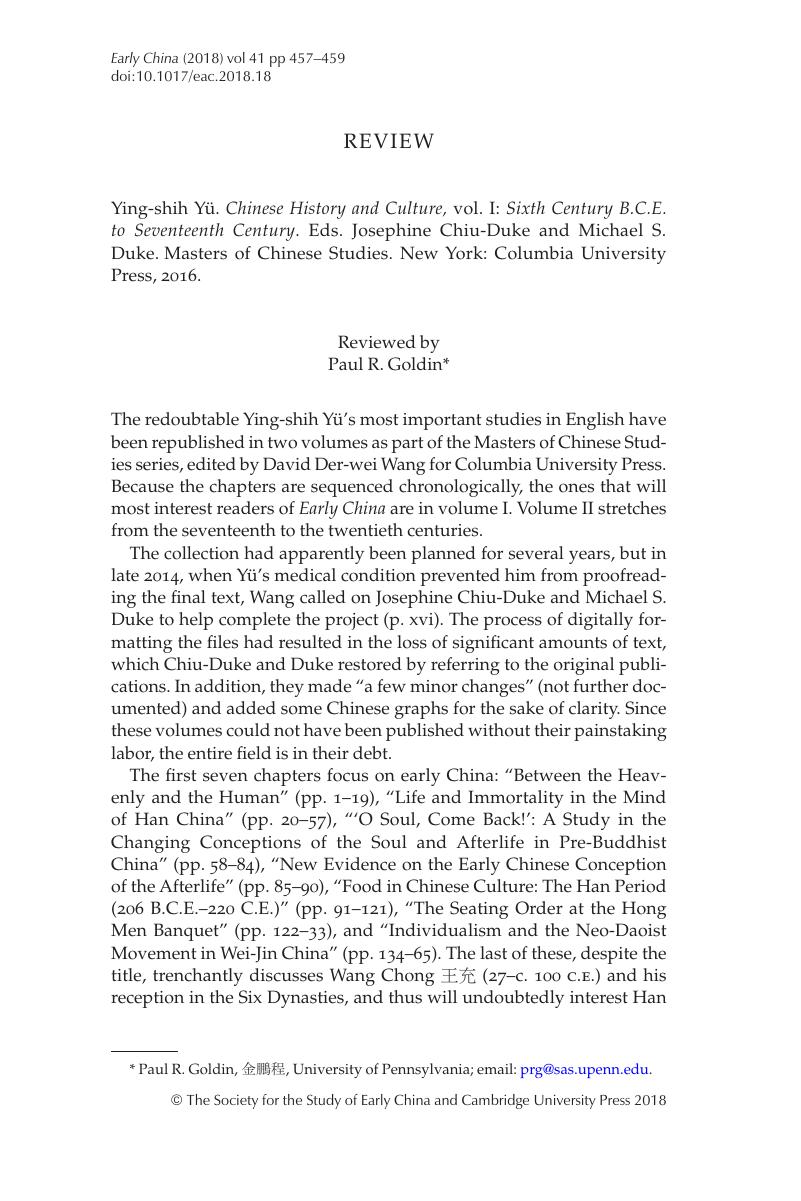No CrossRef data available.
Published online by Cambridge University Press: 28 November 2018

1. Whoever compiled the index, incidentally, failed to include any references to Wang Chong after p. 138, thus obscuring the important discussion on pp. 147–49 (as well as relevant endnotes, e.g., p. 161n61). Regrettably, I discovered many other inaccuracies in the index.
2. Hung, Wu, “Art in a Ritual Context: Rethinking Mawangdui,” Early China 17 (1992), p. 127Google Scholar.
3. Constraints of space preclude a comprehensive listing, but two of the most influential recent studies are by former students of Wu Hung: Tseng, Lillian Lan-ying, Picturing Heaven in Early China, Harvard East Asian Monographs 336 (Cambridge, Mass.: Harvard University Press, 2011), pp. 170–205CrossRefGoogle Scholar; and Wang, Eugene Yuejin, “Ascend to Heaven or Stay in the Tomb? Paintings in Mawangdui Tomb 1 and the Virtual Ritual of Revival in Second-Century B.C.E. China,” in Mortality in Traditional Chinese Thought, ed. Olberding, Amy and Ivanhoe, Philip J., SUNY Series in Chinese Philosophy and Culture (Albany: SUNY Press, 2011), esp. pp. 44–62Google Scholar.